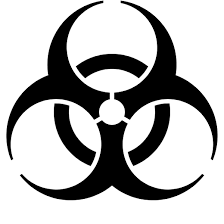Biological Disasters
Biological Disasters
Definition: The devastating effects caused by an enormous spread of a certain kind of living organism that may spread disease, viruses, or an infestation of plant, animal, or insect life on an epidemic or pandemic level.
- Epidemic Level – Indicates a disaster that affects many people in a given area or community.
- Pandemic Level – Indicates a disaster that affects a much larger region, sometimes an entire continent or even the whole planet. For example, the recent H1N1 or Swine Flu pandemic.
Biological Disasters –
1. The nodal Ministry for handling epidemics – Ministry of Health and Family Welfare
- Decision-making
- Advisory body
- Emergency medical relief providing
2. The primary responsibility of dealing with biological disasters is with the State Governments. (Reason – Health is a State Subject).
3. The nodal agency for investigating outbreaks – National Institute of Communicable Diseases (NICD)
4. Nodal ministry for Biological Warfare – Ministry of Home Affairs (Biological warfare is the use of biological agents as an act of war)
Biological Disasters – Classifications
Charles Baldwin developed the symbol for biohazard in 1966.

The US Centres for Disease Control classifies biohazards into four biosafety levels as follows:
- BSL-1: Bacteria and Viruses including Bacillus subtilis, some cell cultures, canine hepatitis, and non-infectious bacteria. Protection is only facial protection and gloves.
- BSL-2: Bacteria and viruses that cause only mild disease to humans, or are difficult to contract via aerosol in a lab setting such as hepatitis A, B, C, mumps, measles, HIV, etc. Protection – use of autoclaves for sterilizing and biological safety cabinets.
- BSL-3: Bacteria and viruses causing severe to fatal disease in humans. Example: West Nile virus, anthrax, MERS coronavirus. Protection – Stringent safety protocols such as the use of respirators to prevent airborne infection.
- BSL-4: Potentially fatal (to human beings) viruses like Ebola virus, Marburg virus, Lassa fever virus, etc. Protection – use of a positive pressure personnel suit, with a segregated air supply.
Legislations for Prevention of Biohazards in India
The following legislations have been enacted in India for the prevention of biohazards and implementation of protective, eradicative and containing measures when there is an outbreak:
- The Water (Prevention and Control of Pollution) Act, 1974
- The Air (Prevention and Control of Pollution) Act, 1981
- The Environmental (Protection) Act, 1986 and the Rules (1986)
- Disaster Management Act 2005, provides for the institutional and operational framework for disaster prevention, mitigation, response, preparedness, and recovery at all levels.